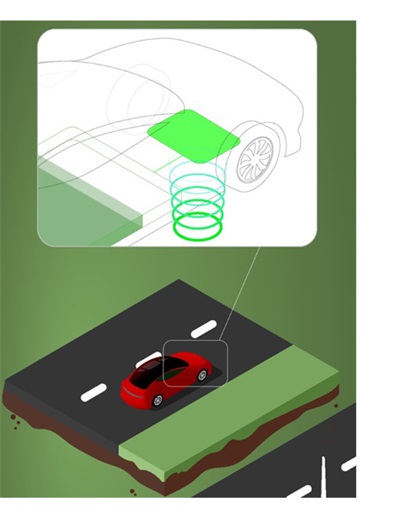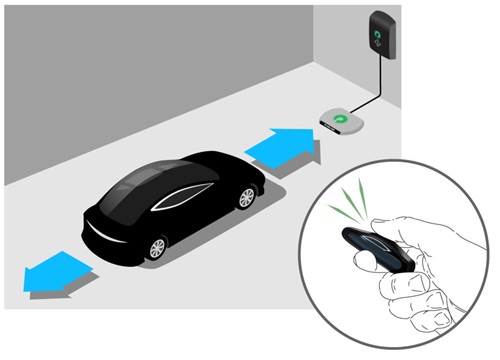
On September 8, the U.S. Patent and Trademark Office disclosed four patents from Tesla related to wireless charging for vehicles. These patents suggest that future Tesla vehicles may achieve wireless charging based on magnetic resonance and other solutions. According to the International Patent Office, the four newly filed patents include: a short-circuit switch to reduce ground leakage currents during inductive charging; a temperature sensor and its application in wireless charging; wireless charging circuit topology and related manufacturing methods; and wireless charging parameter estimation. Over the long term, Tesla has never abandoned the research and development of wireless charging technology. So, what significance does this patent hold for the overall vehicle?
In fact, Tesla's disclosure of these four new patents related to wireless charging is not surprising. Tesla has always been committed to solving the energy supplementation efficiency problem for end users, and wireless charging is one of its important solutions. However, during Tesla's development of wireless charging technology, the company experienced some hesitation and shifts. Previously, Tesla showed little interest in adding wireless charging capabilities to electric vehicles. It wasn't until June of last year that reports emerged indicating Tesla was very interested in the research and development team and capabilities of the German wireless charging company Wiferion.
Reports suggested that Tesla acquired Wiferion for as much as $76 million (approximately 543 million RMB), with expectations that Wiferion's existing business would continue to operate normally. The footer of Wiferion's website now indicates "Tesla Engineering German GmbH 2023," confirming Tesla as the parent company. Wiferion is known for providing wireless charging systems for industrial electric vehicles and also offers solutions for mobile robots, automated guided vehicles, and other battery-powered devices. However, in October of last year, Tesla sold Wiferion to PULS, a DIN rail power supply vendor, for an undisclosed amount. Nonetheless, reports at the time indicated that Tesla retained Wiferion's engineers, who are seasoned professionals in the field of high-power wireless power transmission.
In March of this year, Tesla showcased a slide at its Investor Day event featuring wireless charging for the Model S. Coupled with Tesla's previous acquisition actions, industry analysts suggested that Tesla might be on the verge of launching a wireless charging model. In March of the same year, media also noted that Tesla integrated an "inductive charger interface" into the battery pack of its Cybertruck to match future wireless charging charger devices. These signs indicate Tesla's dedication and persistence in wireless charging technology. But why is Tesla so committed? What impact will achieving wireless charging have on the energy supplementation system for electric vehicles?
First, we must clarify the specific differences between wired and wireless charging. From the perspective of vehicle usage, many automotive companies have innovated a series of solutions—including battery swapping, 800V super fast charging, and the much-discussed concept of wireless charging—to enable faster and more efficient energy supplementation for electric vehicles. Tesla's chief designer, Franz von Holzhausen, once stated, "Tesla is developing inductive charging technology that requires no plugs; just park the car over the charging pad in the garage, and charging will begin automatically." In other words, unlike wired charging, wireless charging aims to address issues such as "dirty plugs" and "complex operations" associated with charging stations, ultimately helping users improve energy supplementation efficiency and convenience.

From a technical perspective, wireless charging technology is based on electromagnetic induction, and its principles are relatively mature. However, achieving high efficiency in wireless charging still requires advanced technology compared to traditional charging methods. The current maximum power for wireless charging in passenger vehicles is only 11 kW, which is less efficient than traditional charging methods, and the equipment costs are high. A 3kW wireless charging system is priced above 10,000 RMB, while a similarly efficient AC slow-charging station costs just over 1,000 RMB. This undoubtedly raises economic barriers to widespread adoption. Additionally, like the unification of USB interfaces, wireless charging requires a common protocol for compatibility across devices from different manufacturers. Although standards are planned, real-world adoption will take time.
Despite the significant challenges facing the implementation of wireless charging for electric vehicles, Tesla remains dedicated to researching this technology. One major reason is that advancements in autonomous driving technology enhance the advantages of wireless charging.
Simply put, if autonomous vehicles can automatically charge at designated locations without human intervention, it would further simplify the charging process and improve the convenience of energy supplementation for electric vehicles.
Next:The era of wireless charging of new energy vehicles is coming——WanJi wireless charging system
Previous:Analysis of Wireless Charging Technology for automobile Electric Vehicles(EV)
Contact Person: Miss. Kiki
| WhatsApp : | +8617763224709 |
|---|---|
| Skype : | +8617763224709 |
| WeChat : | +8617763224709 |
| Email : | kiki@lifepo4-battery.com |